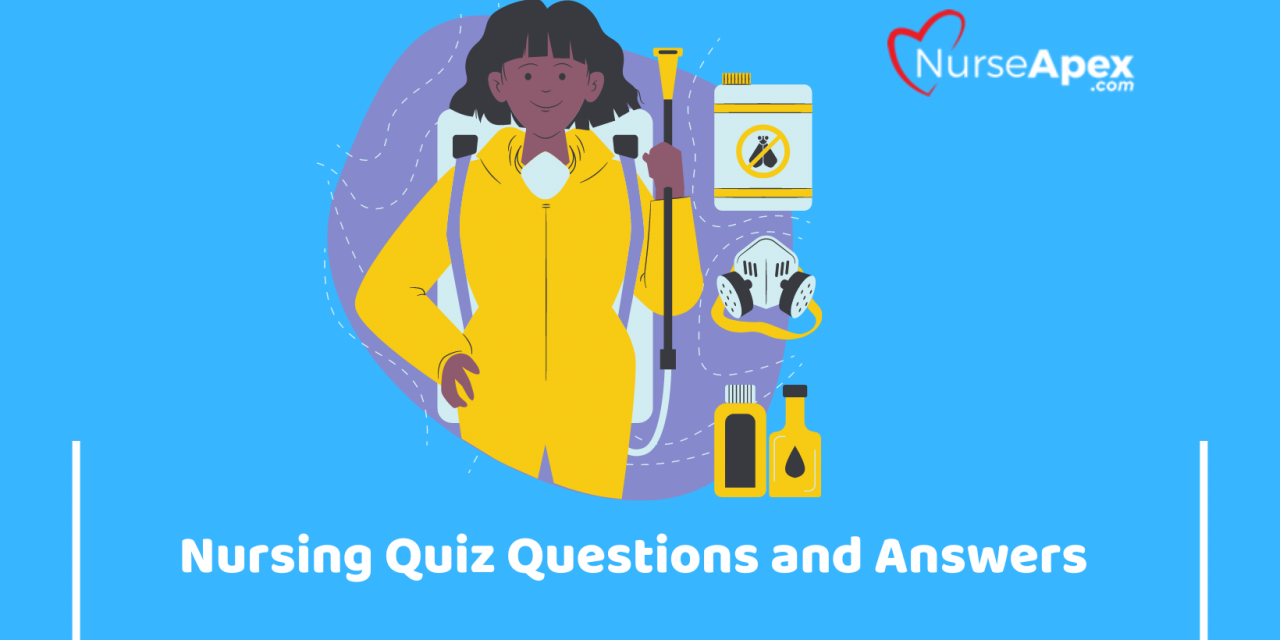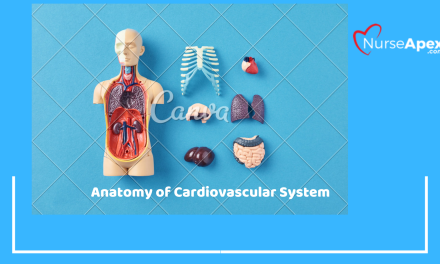Define nursing: the protection, promotion, and optimization of health and abilities, prevention of illness and injury, and alleviation of suffering through the diagnosis and treatment of human response, and advocacy in the care of individual, families, communities, and populations
Value of education in nursing: more educated nurses provide a better outcome for patients
Ways to become RN: associate degree programs, bachelor degree programs, RN to BS programs, accelerated degree program, diploma program
Why does diversity matter in nursing: to reflect population, aspire more people to be nurses, and be more relatable to patients
Population of Nurses in US: 2.86 million
Setting and Population of nursing: nurses work in many different settings such as a hospital or home care AND nurses work with many different populations such as elders, babies, and people with heart disease
role of the professional nurse: always be respectful, honest, kind, and report issues, work in politics, work as administrator, develop health policy, run businesses, work in legal system, monitor quality
Registered nurse salary: $68,910
nurse practitioner salary: $95,070
all advanced practice registered nurses salary: $109,352
Nursing instructors and teachers, post-secondary salary: $70,200
Rank nursing professions from highest to lowest in terms of pay: advanced practice RNs, nurse practitioner, nursing instructor, registered nurse
Percentage of students in associate degree programs: 58%
Percentage of students in bachelor’s degree programs: 38%
Percentage of students in diploma programs: 4%
Rank from highest to lowest the percentage of students in each nursing program: associate degree, bachelor’s degree, diploma program
Rank from highest to lowest the the amount of education RNs have: BSN, ADN, master, diploma, PhD
Percentage of nurses that stay in school: 84% of BSN students, 94-97% of Clemson BSN students, 80% ADN students
Percentage of RNs that have BSN : 44.6%
Percentage of RNs that have ADN: 37.9%
Percentage of RNs that have Diploma: 6.9%
Percentage of RNs that have Master’s degree: 10.2%
Percentage of RNs that have PhD: 4%
Ethnicity of Nursing Students Rank percentages highest to lowest: greater than 70% white, 12.2% black, 8.1% Hispanic, 5.9% asian, 1.5% native American
Ethnicity of BS students Rank percentages highest to lowest: 68.4% white, 10.4% hispanic, 9.9% black, 8.1% asian, .5% native american
Ethnicity of RNs Rank percentages highest to lowest: 83% white, 6% black, 6% hispanic, 3% asian, 1% native american
Percentage of male nurses: 7-10%
Percentage of male nursing students: 15%
Analytical thinking (critical thinking): involves analyzing and evaluating information, often to work through a problem or decision. It is largely responsible for school success and is recognized and measured through traditional testing methods
Creative thinking: involves generating new and different ideas and approaches to problems, and often, viewing the world in ways that disregard convention
Practical thinking: putting what you’ve learned into action to solve a problem or make a decision. It enables you to accomplish goals despite real-world obstacles
Essentials of Baccalaureate Nursing Education:
- liberal education
- basic organizational and systems leadership for quality care and patient safety
- scholarship for evidence based practice
- information management and application of patient care technology
- health care policy, finance, regulatory environments
- communication and collaboration for improving patient health outcomes
- clinical prevention and population health
- professionalism and professional values 9. practice with diverse background of patients
Why do we have a nursing shortage: the baby boomer generation is aging, so there will be a lot more seniors who need care, and the aging of nurses in the workforce is increasing meaning a lot will retire in the next 10-15 years, nursing schools turning away qualified students due to shortage of faculty and clinical patients, job burnout and dissatisfaction, hospital acuity increase, population growth, trends in health-care financing
Ways to fix the shortage: fix workplace problems that lead to burnout and job dissatisfaction, reverse undervalue of nurses, recruit and retain nurses, increase capacity to educate nurses, improve image of nursing, increase diversity of nursing
Where do nurses work: hospital, long term care, offices, output/ambcare, home health, school nurse, nursing education, insurance companies, employment services, human resource programs, justice dept.
The most basic characteristic of good nurse: respectful, honest, kind, comforting
Chain of command for concerns first to last
- Faculty member involved
- Lead teacher
- Undergrad coordinator
- Director/Assoc Dean
- Dean
- Provost
- President
Roles requiring graduate degree: instructors, advance practice nurses, nurse practitionersLeader
(2) Nursing Diagnosis
(3) Planning
(4) Implementation
(5) Evaluation
Collects comprehensive data pertinent to the patient’s health and/or situation.
– info medical personnel can look at
– begins the moment you walk through the door
NO! Only the patient can give subjective info.
OBJECTIVE info is what the RN sees, hears, or smells
** Nurses have to be aware of potential risks based on health problems.
** Also collaborate with other specialists to manage the problem(s)
First info → Related to → as evidence by
WHAT is the problem?
WHY is it a problem?
WHAT is the evidence of that problem?
Ex:
“Acute pain → related to surgical incision → as evidence by patient report (or as evidence by crying)”
Identify the expected outcomes when planning for the patient’s individual situation.
Interventions must be measurable criterion indicating that objectives have been met.
Develops a plan that prescribes strategies and alternatives to attain expected outcomes.
– Prioritize strategies
– Goals (statement that describes the aim if the nursing care) should be short term and long term
Expression through: Words, movements, voice inflection, facial expression, and use of space
- Pre-interaction
- Orientation
- Working
- Termination
– Review available data, history
– Talk to other caregivers who have info about patient
– Anticipate health concerns or issues that arise
– Identify a location or setting that fosters comfortable, private interaction
– Plan enough time for initial interaction
– Set the tone for the relationship by adopting a warm, empathetic, caring manner
– Recognize relationship is tentative
– Expect patient to test your competence and commitment
– Closely observe
– Begin to make inference and form judgements about messages and behaviors
– ASSESS PATIENT HEALTH STATUS
When nurse and patient work together to solve problems and accomplish goals. TEACHING occurs.
– Encourage pt. to express feelings about health
– encourage pt. w/ self exploration
– Provide information
– Help pt. set goals
– Take action to meet said goals
– Use therapeutic comm
– Use appropriate self-disclosure & confrontation
Describe the TERMINATION phase of the Helping Relationship. Ending of the relationship
– Remind pt. that termination is near
– Evaluate goal achievement with pt.
– Reminisce about relationship with pt.
– Separate from the pt. by relinquishing responsibility for care
– Achieve a smooth transition for pt. to other caregivers
- Professionalism – appearance, demeanor, behavior
- Courtesy – hello, good-bye, knock on doors, please, thank you…
- Use of Names – Always introduce yourself
- Confidentiality – HIPPA
- Trust – always honest!
- Acceptance & Respect – Non-judgmental attitudes
- Availability – “Anything else I can get you?
- Socializing – don’t socialize with pt. and don’t socialize with colleagues where pt’s can hear
** Use SOLER to facilitate attentive listening
O – Open posture
L – Lean toward the patient
E – Establish & maintain eye contact
R – Relax
Particularly useful when people are confronted with decisions that require thought.
- Become sensitive to self & others
- Promote and accept expression of pos & neg feelings
- Develop helping trust relationships
- Instill faith & hope
- Promote interpersonal teaching & learning
- Provide supportive environment
- Assist with gratification of human needs
- Allow for spiritual expression
- Social zone
- Consent zone
- Vulnerable zone
- Intimate zone
- Sitting at a patient’s bedside
- Taking patient history
- Teaching patient
- Exchanging info at shift change
- Making rounds with physician
- Sitting at the head of a conference table
- Teaching a class for patients with diabetes
- Conducting family support
- Speaking at a community forum
- Testifying at a legislative hearing
- Lecturing to a class of students
Chronic or serious infections/diseases/disorders
– COPD → pneumonia
– heart failure → skin breakdown
– diabetes → venous stasis ulcers
- * diabetes patients at risk for chronic infections
⊗ Disturbed body image = look bad, smell bad, etc
⊗ Risk for fall
⊗ Risk for infection = lab results (WBC 5,000-10,000/mm³), review current meds
⊗ Identify potential sites of infection = IV, catheter
⊗ Imbalanced nutrition = protein needed for healing
⊗ Acute pain
⊗ Impaired skin integrity or tissue integrity
⊗ Social isolation
Health promotion – break chain of infection
Nutrition
Hygiene
Immunization
Adequate rest and regular exercise
the borders of the initial injury.Langerhans Cells – Attach themselves to antigens that invade damaged skin.Lichenification – Thickening and roughening of the skin with
increased visibility of skin furrows from
chronic rubbing.Precursor – A substance, cell, or cellular component from which another substance, cell, or cellular component is formed especially
by natural processes.Stratum germinativum – Inner cellular keratin layer of the epidermis, that contains melanocytes.Stratum corneum – Outer horny layer of dead keratinized cells
Grasping the skin on the sternum, forehead, or top of the hand and gently pulling up.
After letting go of the skin, the skin should “snap” back into place within three seconds.
Skin that remains elevated or “tented” may be due to age related
changes, dehydration, or a combination of both
The appearance of the patient’s nails may provide information about systemic illnesses and yield information about their self care abilities or behaviors:
•Clubbed nails may indicate chronic hypoxia. Bases are flat or rounded, not concave.
° Inadequate nutrition – lines (grooves) going across nails horizontally.
•Cyanosis: May be present in the nail bed, indicating poor
perfusion and possible underlying vascular insufficiency. Nicotine staining can be seen in the nails.
Observe for infections of the nails or nail bed
- Cleanses the skin
- Acts as skin conditioner
- Relax the patient
- Promotes circulation
- Encourages musculoskeletal exercises
- Stimulates rate & depth of respirations
- Promotes comfort through muscle relaxation and skin stimulation
- Improves self-image
- Helps build stronger nurse-patient relationship
only areas that cause discomfort or odor if left unwashed Sponge bath at sink –
pt. sits in chair at sink and nurse helps with areas pt. can”t reach Bag bath – commercially prepared & disposableShower – full self-care




